Info
Subfamily: Panicoideae
Genus etymology: Panicum = "belonging to bread" [Latin] refering to use by several species as cereal grains
Species etymology: repens = "creeping" [Latin] refering to the habit
Photosynthetic type: C4 (warm season)
Nativity: naturalized - accidental
First recorded in Hawaiʻi: 1916
Legal status: HDOA - noxious weed
Map
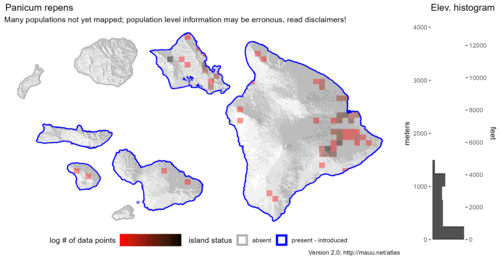

Inflorescence
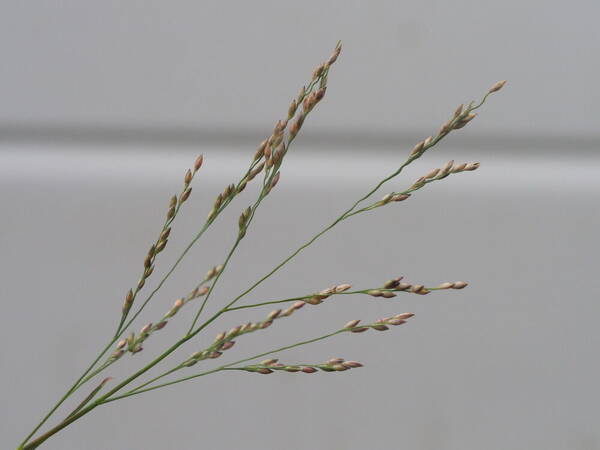
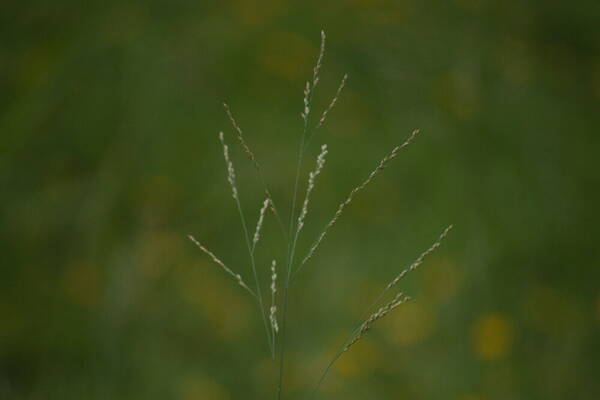
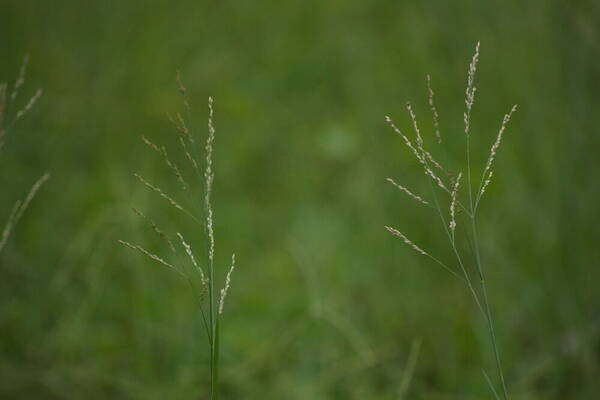
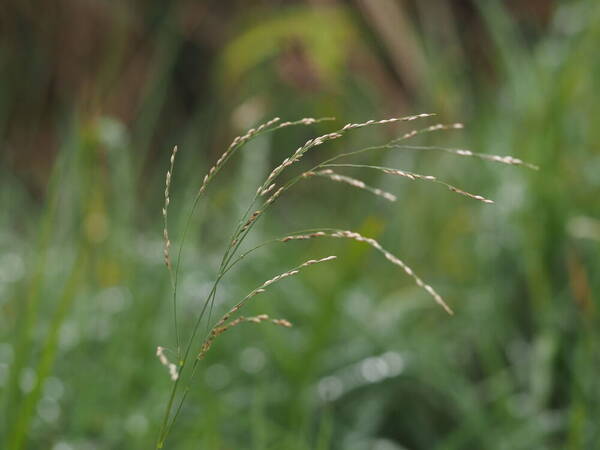

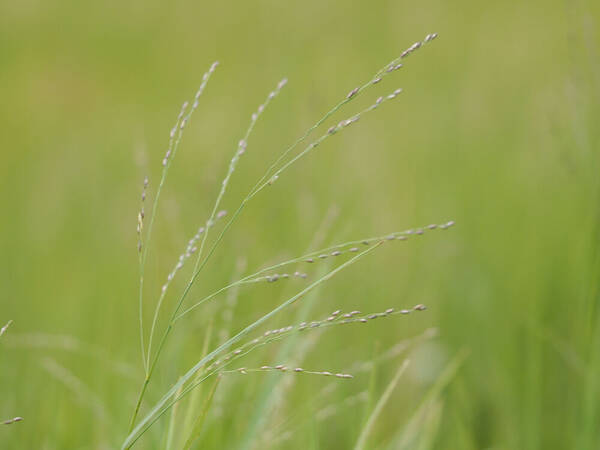
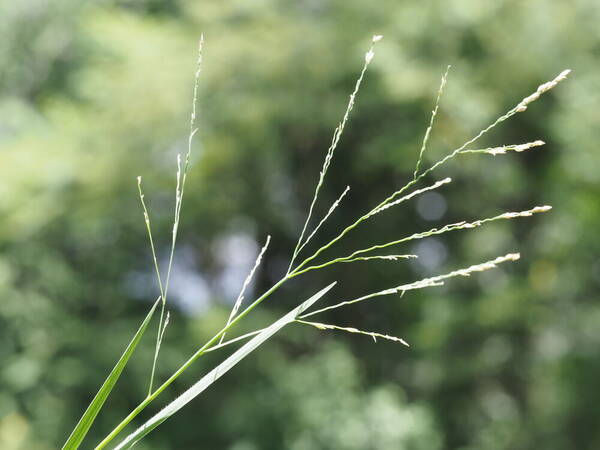
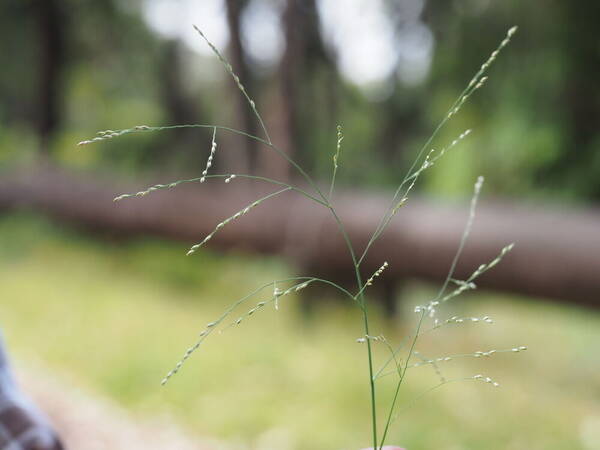

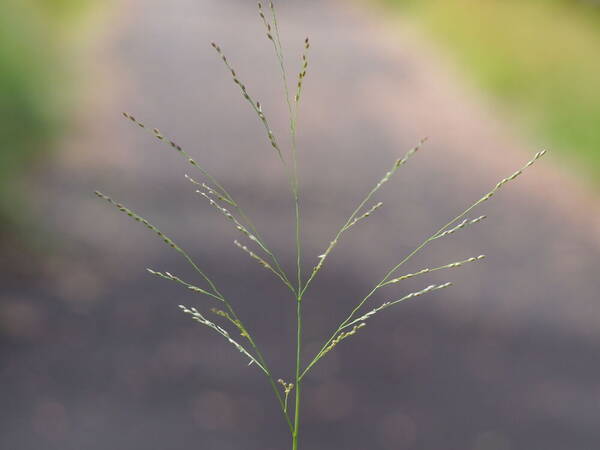
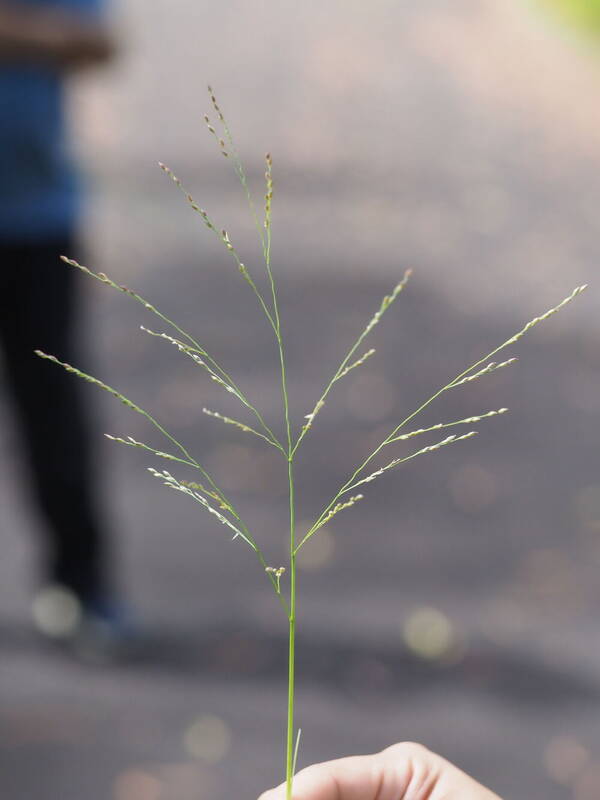
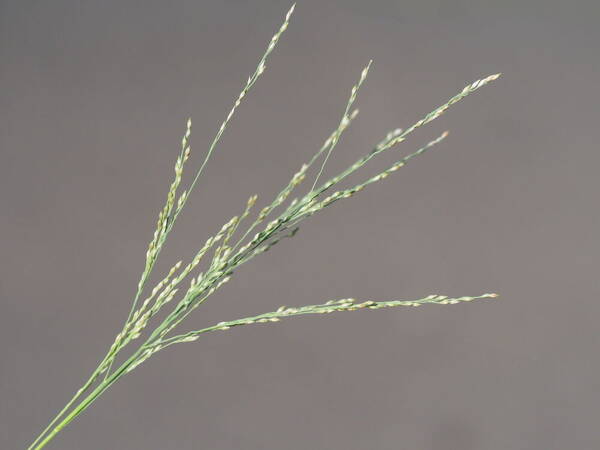
Plant
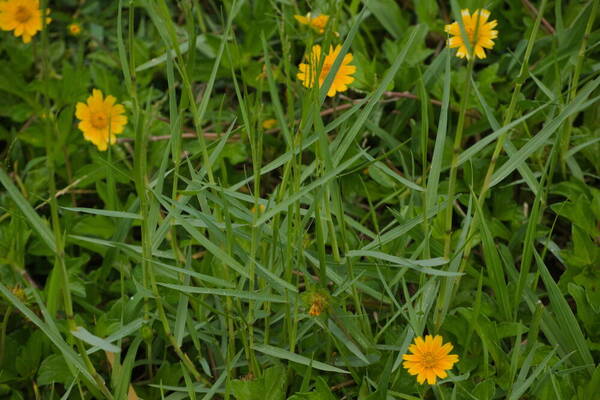
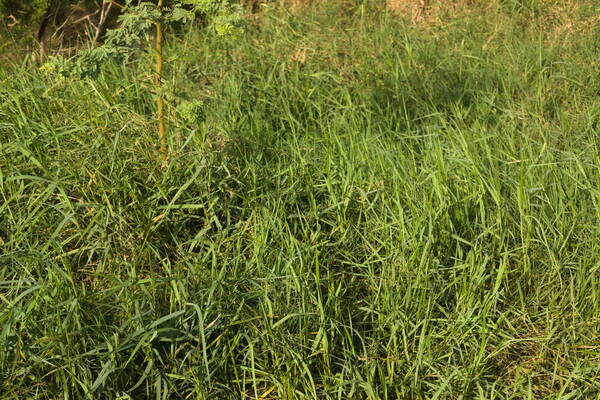
Habit
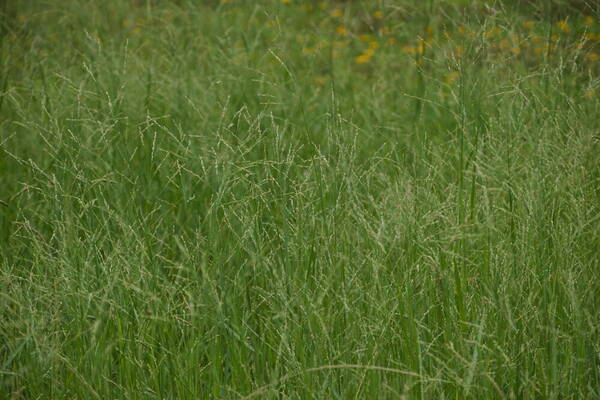
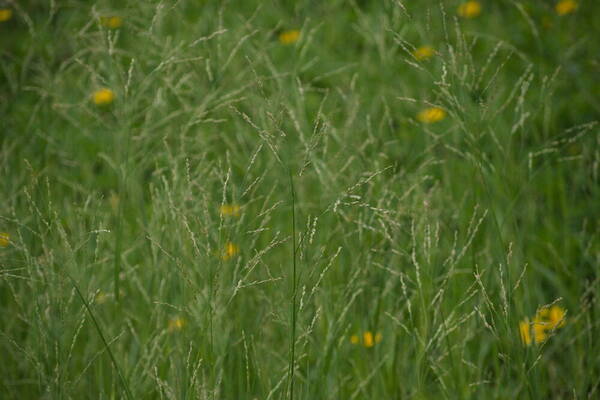
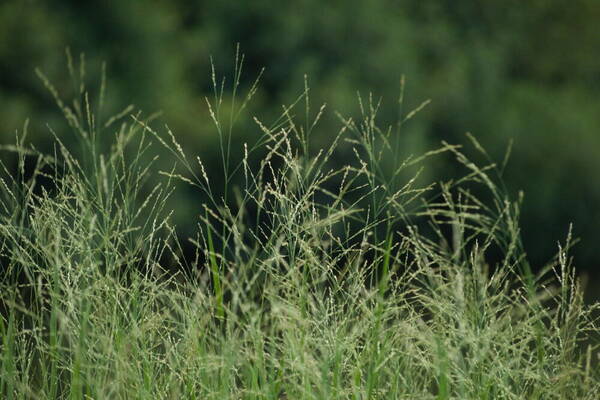
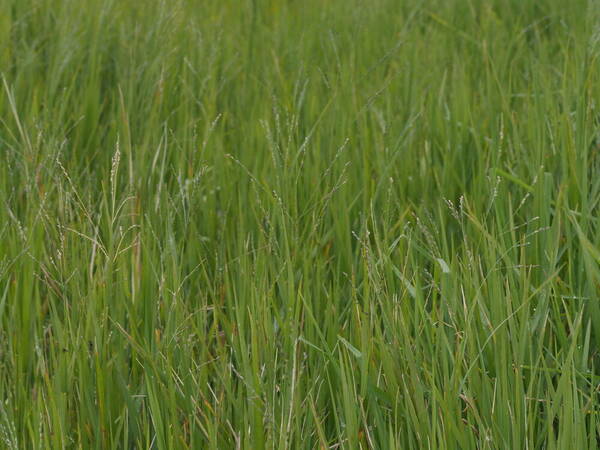
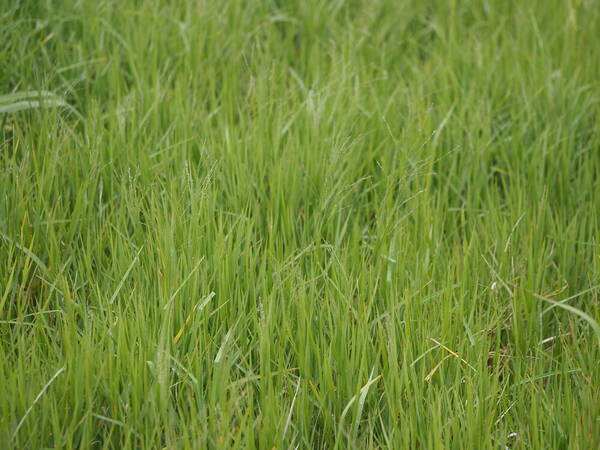
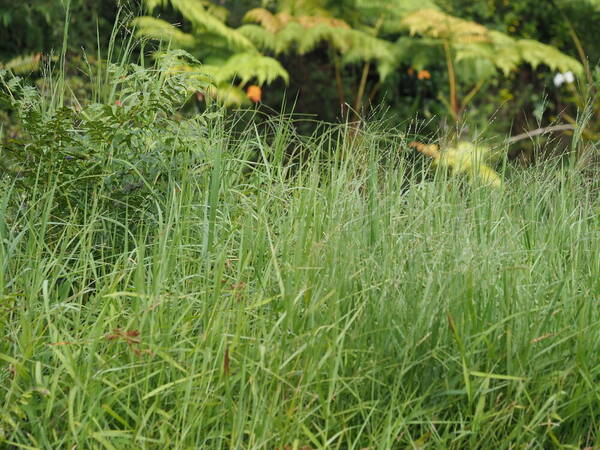
Spikelets
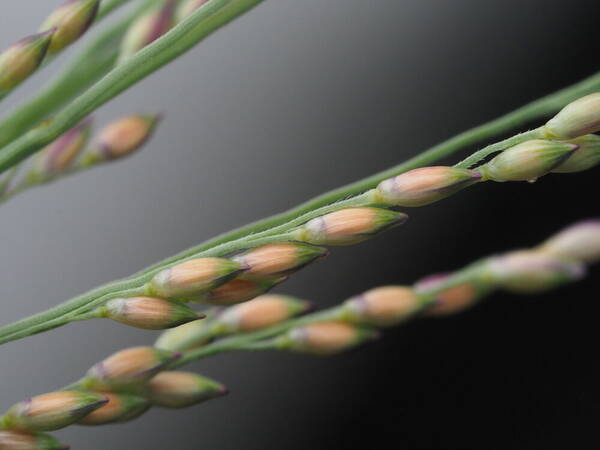
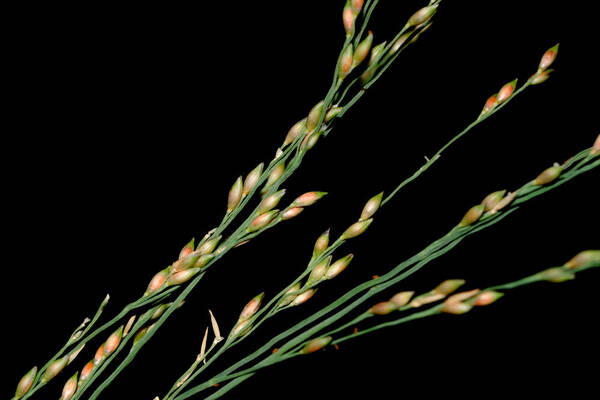
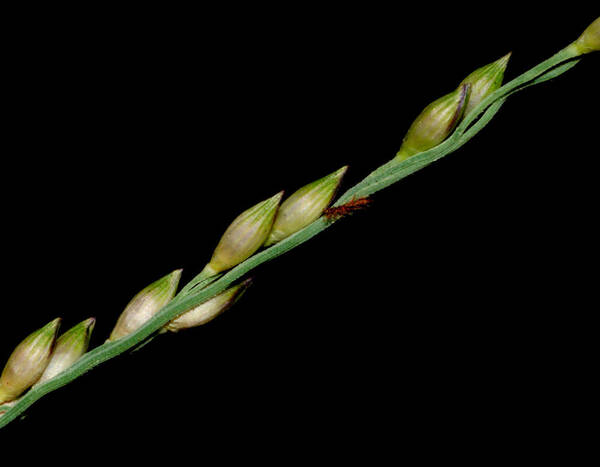
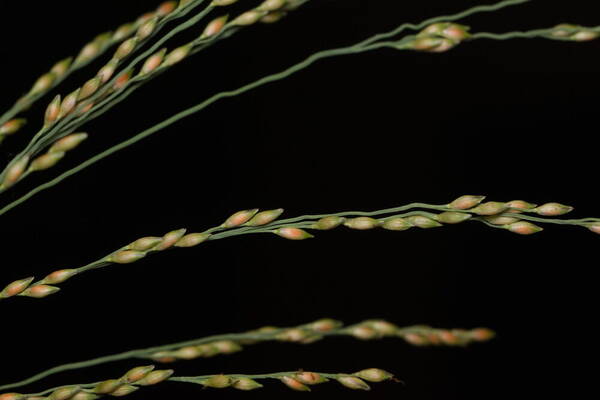
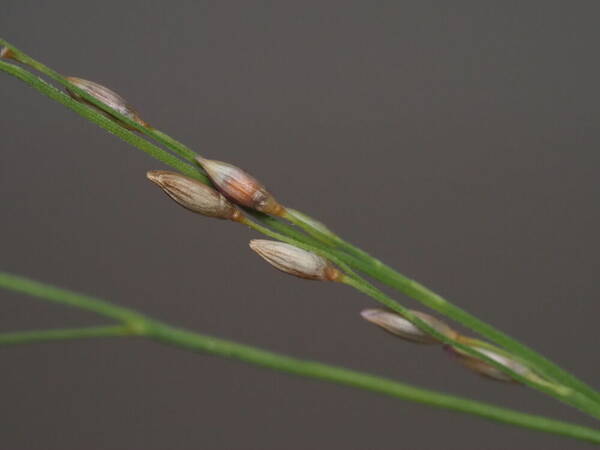
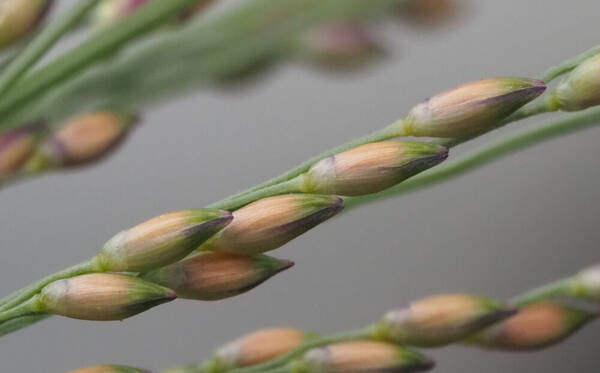
Landscape
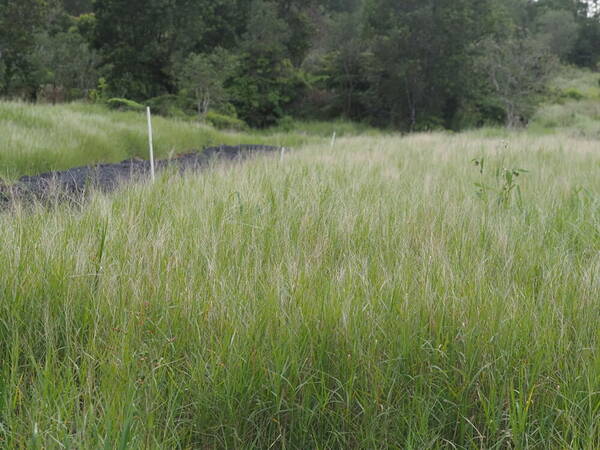
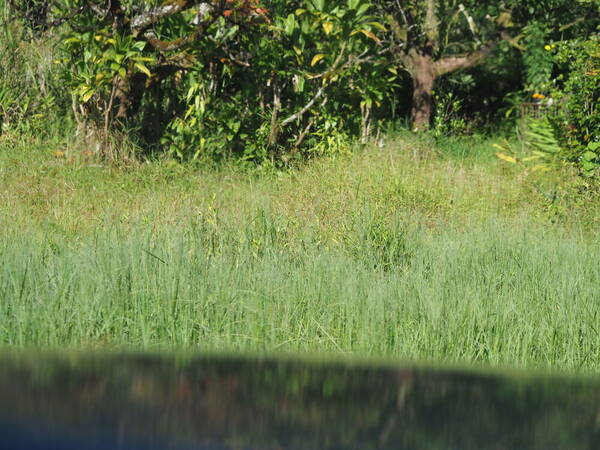
Description
Subglabrous perennial with long rhizomes and often also surface stolons; culms tough, erect or decumbent, 30–100 cm. high, often from a knotty base. Leaf-blades linear, 7–25 cm. long, 2–8 mm. wide, flat or rolled when dry, often stiff and pungent, distichous, ascending close to the stem, acute or acuminate. Panicle narrowly oblong, 5–20 cm. long, sparsely to moderately branched, the branches usually ascending. Spikelets ovate, 2.5–3 mm. long, pale, often tinged with purple, acute; lower glume broadly ovate, 1/3 the length of the spikelet, hyaline, 1(–3)-nerved, clasping the base of the spikelet, obtuse or acute; upper glume ovate, as long as the spikelet, membranous, (7–)9-nerved, acute; lower lemma similar to the upper glume, ♂, its palea well developed; upper lemma pale and glossy. Fig. 121.
(Description source: Clayton, W.D. & Renvoize, S.A. 1982. Flora of Tropical East Africa. Gramineae (Part 3). A.A. Balkema, Rotterdam. 448 pp. )
Perennial with long rhizomes and occasionally with surface stolons; culms 30–100 cm. high, erect or decumbent, tough, often arising from a knotty base. Leaf laminae 7–25 cm. long and 2–8 mm. wide, linear, flat or involute, often strongly distichous and ascending close to the stem, usually stiff and pungent. Panicle 5–20 cm. long, narrowly oblong, sparsely to moderately branched, the branches usually ascending. Spikelets 2.5–3 mm. long, ovate-elliptic or ovate, acute, inferior glume 1/3 the length of the spikelet, broadly ovate or cuff-like, membranous, 0–3-nerved, clasping the base of the spikelet, obtuse or acute; superior glume 7–9-nerved; inferior lemma similar to the superior glume, male, its palea well developed; superior lemma and palea pallid, glossy.
(Description source: Launert, E. & Pope, G.V. (eds.). 1989. Flora Zambesiaca. Volume 10. Part 3. Kew, London. 152 pp. )
Plants perennial; rhizomatous, forming extensive colonies, rhizomes long, to 5 mm thick, branching, scaly, sharply pointed. Culms 20-90 cm tall, 1.8-2.8 mm thick, erect, rigid, simple or branching from the lower and middle nodes; nodes glabrous or sparsely hispid; internodes glabrous. Sheaths generally shorter than the internodes, not keeled, lower nodes glabrous or hispid, hairs papillose-based, particularly near the summits; ligules 0.5-1 mm; blades 3-25 cm long, 2-8 mm wide, often distichous, flat to slightly involute, firm, adaxial surfaces pilose basally, glabrous or sparsely pubescent abaxially. Panicles 3-24 cm long, usually less than 5 cm wide, open; primary branches 2-11 cm, alternate, few, stiffly ascending to spreading; pedicels 1-6 mm, subappressed. Spikelets 2.2-2.8 mm long, 0.8-1.3 mm wide, ellipsoid-ovoid, pale green, acute, upper glumes and lower lemmas sometimes separating (gaping) beyond the florets. Lower glumes 0.5-1 mm, 1/5 – 2/5 as long as the spikelets, glabrous, faintly 1-5-veined, subtruncate to broadly acute; upper glumes and lower lemmas glabrous, extending 0.1-0.5 mm beyond the upper florets, scarcely separated; upper glumes 7-11-veined, shorter than the lower lemmas, acute to short-acuminate; lower florets staminate; lower lemmas 7-11-veined; lower paleas 1.9-2.1 mm, oblong; upper florets 1.8-2.7 mm long, 0.7-1.3 mm wide, broadly ellipsoid, broadest at or above the middle, glabrous, shiny, smooth, apices rounded. 2n - 36, 40, 45, 54.
(Description source: Barkworth, M.E., Capels, K.M., Long, S. & Piep, M.B. (eds.) 2003. Flora of North America, north of Mexico. Volume 25. Magnoliophyta: Commelinidae (in part): Poaceae, Part 2. Oxford University Press, New York. 783 pp http://floranorthamerica.org/Panicum_repens )
Rhizomatous perennials 10-130 cm tall, usually glabrous; stems usually unbranched, rhizomes developed, covered with bladeless sheaths. Ligule a ciliate membrane, 0.4-1 mm long; blades 4-30 cm long, 0.2-0.8 cm wide, flat to involute, often conspicuously distichous, glabrous to pilose. Panicles 3-19 cm long, the branches solitary; spikelets 2.5-3 mm long, oblong to lanceoloid-ellipsoid, acute, glabrous; first glume 0.6-0.8 mm long, ca. 4-4 as long as spikelet, hyaline, obtuse, obscurely nerved, second glume 7-9-nerved; first floret staminate, first lemma 7-9-nerved, first palea as long as first lemma; second floret 1.7-2.2 mm long, acute, glossy, smooth; anthers 1.4-1.7 mm long. [2n = 20, 36, 40, 45, 54, 60.]
(Description source: O’Connor, P.J. 1990. Poaceae, pp. 1481–1604. In: Wagner W.L., Herbst D.R. & Sohmer S.H. (eds.)., Manual of the flowering plant of Hawaiʻi. Vol. 2. University of Hawaii Press & Bishop Museum Press, Honolulu )